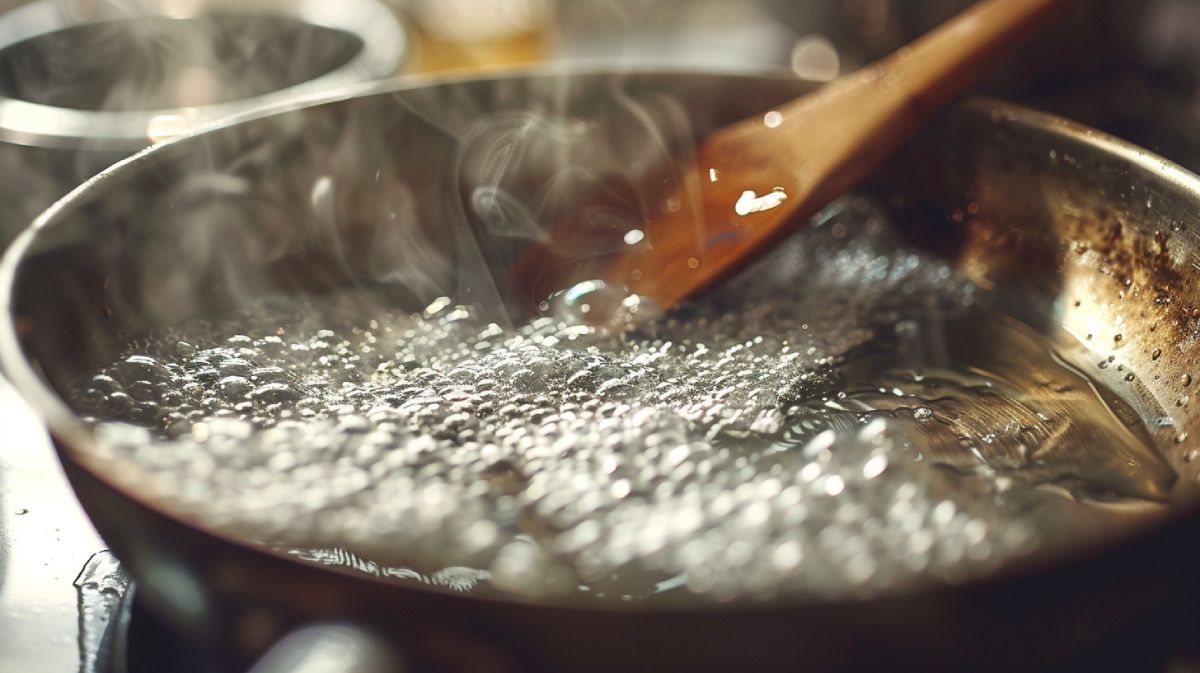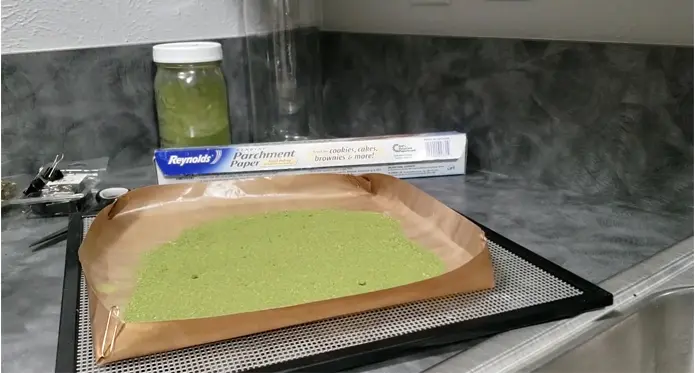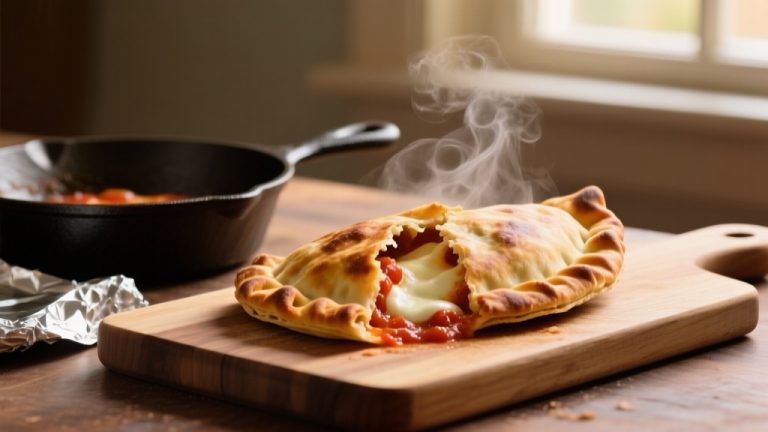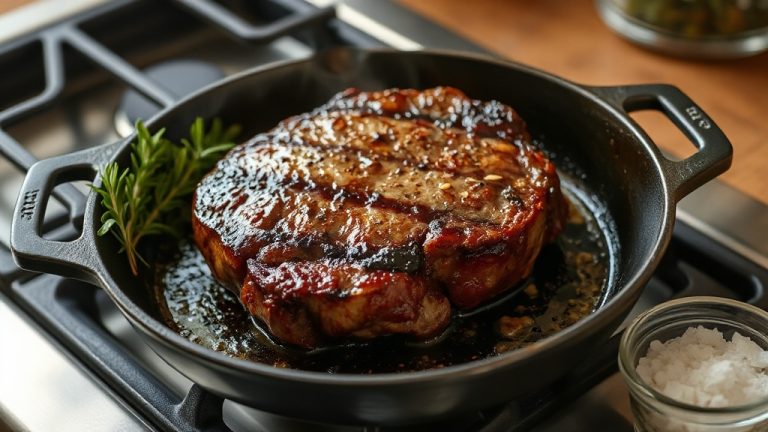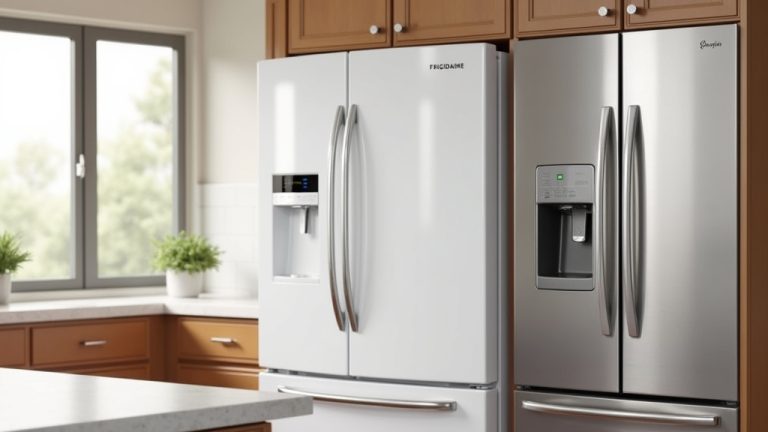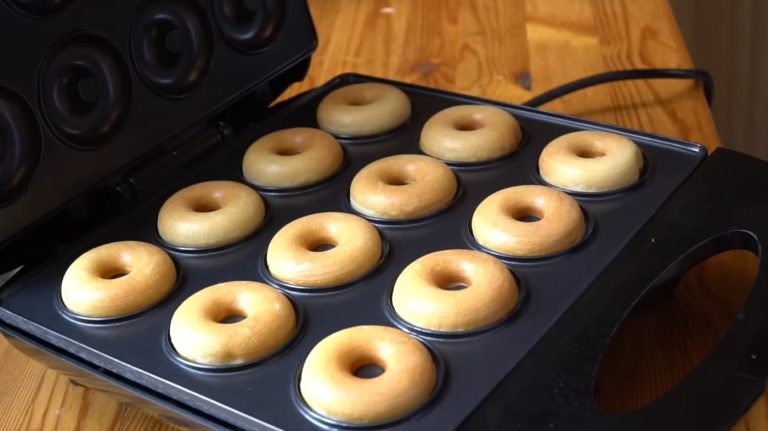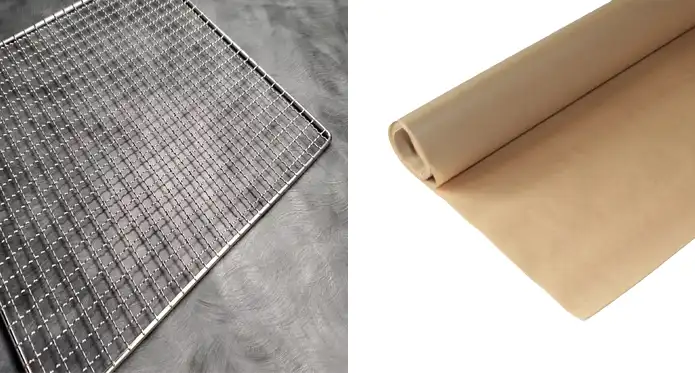How to Get Hard Candy Out of Pan: Sweet Escape
To get hard candy out of a pan, act quickly for the best results. Start by boiling water and pouring it directly into the pan, as the heat will soften the sticky residue. Use a spoon or spatula to gently scrape away the candy. If you prefer a more flavorful twist, simmer a custard mixture of cream and milk to dissolve the candy while creating a delicious sauce.
For stubborn bits, try soaking the pan in hot water with salt overnight or even freezing it for a couple of hours. There’s even more insightful strategies to explore as you tackle this sticky situation.
Key Takeaways
- Pour boiling water into the pan to dissolve sticky candy residue efficiently and prevent hardening.
- Soak the pan in hot, soapy water for 30 minutes to naturally loosen stubborn candy.
- Use a flexible spatula to scrape softened candy from the pan edges inward for easier removal.
- Consider simmering a custard mixture in the pan to dissolve candy while creating a delicious dessert.
Importance of Timely Cleanup
Cleaning up melted sugar right away is essential because it prevents the sticky substance from hardening into a stubborn mess that’s tough to remove. When you act quickly, you maintain the sugar’s malleability, allowing for a smoother cleanup. If you let it sit, it dries and leaves behind a significant amount of residue that can cling to your pan, making your next cooking session a hassle.
Using hot water is one of the best ways to tackle melted sugar. It helps dissolve the sugar quickly, allowing you to wipe it away with minimal effort. Delaying this process only increases your cleaning time and effort. By prioritizing timely cleanup, you not only simplify your task but also create a more hygienic cooking environment.
Imagine trying to scrub away hardened sugar later; it’s a tedious chore! Instead, by addressing the mess immediately, you can enjoy a sparkling kitchen and even save the sugar for another recipe.
Boiling Water Method
When you’re faced with hardened candy stuck in your pan, the boiling water method can be a game changer.
This technique not only softens the residue but also makes it much easier to scrape away.
Let’s explore the benefits and the step-by-step process that’ll have your cookware sparkling in no time.
Benefits of Boiling Water
One of the simplest and most effective ways to tackle stubborn candy residue is by harnessing the power of boiling water, which works wonders in softening those hardened bits for easy removal.
When you fill the pot with water and bring it to a boil, the heat causes the candy around the edges to become pliable, allowing you to remove residue with minimal effort.
Here are some key benefits of using boiling water:
- Efficient: It dissolves most sticky substances like caramel and butterscotch within minutes.
- Gentle on Cookware: This method considerably reduces the need for scrubbing, preserving the integrity of your pots and pans.
- Time-Saving: You’ll spend less time battling with stubborn residue and more time enjoying your culinary creations.
Step-by-Step Process
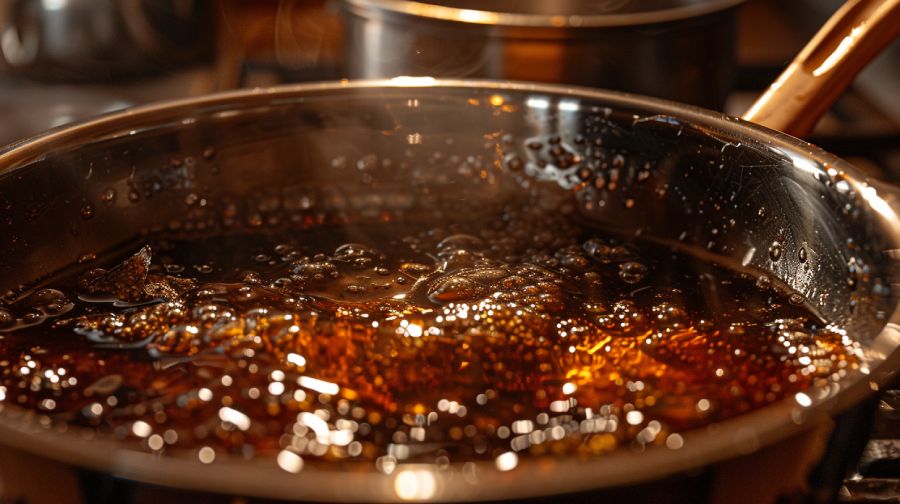
After discovering the benefits of boiling water for tackling stubborn candy residue, you can easily follow this step-by-step process to effectively remove hard candy from your pan.
First, fill your pot with enough water to completely submerge the candy residue. This guarantees that the boiling water can reach all the sticky spots.
Next, bring the water to a rolling boil. The heat will soften the hardened candy, making it much easier to remove.
After boiling for a few minutes, grab a spoon or spatula and gently scrape away the softened candy from the edges of the pan. You’ll notice how the sugar residue begins to lift away effortlessly.
Once you’ve removed the candy, carefully pour off the hot water—remember to use caution to avoid burns.
Finally, wash the pot with soapy water to eliminate any remaining sugar residues. This method is effective because boiling water dissolves most sticky substances, saving you from harsh scrubbing.
Stovetop Custard Method
When you’re ready to tackle that stubborn hard candy stuck in your pan, the stovetop custard method is a game changer.
You’ll combine your liquid ingredients like cream or milk, carefully simmering them to dissolve the candy while crafting a delicious custard.
This approach not only cleans your pot but also enhances the flavor of your dessert, turning a hassle into a tasty treat.
Ingredients for Custard Dissolution
To effectively dissolve hardened candy while creating a delicious custard, you’ll need to gather liquid ingredients like cream, milk, or coffee, ensuring they’re measured accurately for the best results. This precision is essential, especially when dealing with the residue left from candy in your pots and pans.
Here are some key ingredients to take into account:
- Heavy cream: Adds richness and a smooth texture to your custard.
- Whole milk: Balances the cream’s richness while keeping the custard light.
- Coffee: Introduces a unique flavor profile that complements the sweetness.
Once you have your ingredients ready, combine them in your pot and gently heat the mixture. The warm water will help dissolve the stubborn candy residues, while the flexible spatula can scrape away any stuck pieces.
This stovetop custard method not only cleans your pots and pans but also infuses your custard with delightful flavors.
Simmering Techniques Explained
Simmering is a gentle and effective technique that not only dissolves stubborn candy residues but also infuses your custard with rich flavors.
To start, weigh your liquid ingredients—like cream, milk, or coffee—and pour them into your pot. Gradually bring the mixture to a gentle simmer. This steady heat is key, as it allows the sticky candy residues to soften without scorching.
As the simmering continues, use a flexible spatula to scrape the sides of the pot, dislodging any stubborn bits.
It’s essential to keep an eye on the process; while this technique may take longer than boiling water, the flavor enhancement it provides to your custard is well worth the wait.
Make sure all the candy residues are fully dissolved before you finish preparing the custard.
Flavor Enhancement Benefits
The stovetop custard method not only transforms stubborn candy remnants into a delectable dessert but also enriches the flavor profile with every simmering moment. As you gently dissolve those hardened pieces, you’re crafting a custard that takes on a new, luxurious character thanks to the unique tastes of the candies.
Here are some key benefits of this method:
- Flavor Enhancement: The candy adds unexpected complexity to the custard, elevating simple ingredients to gourmet status.
- Cleaning Pot: While you create a delicious dessert, you’re also effectively cleaning your pot, eliminating the hassle of scrubbing.
- Versatile Base: Using cream, milk, or coffee allows you to customize the custard, integrating flavors that complement the candy.
Alternative Cleaning Techniques
Soaking your pan in a hot water and salt mixture overnight can work wonders, as the salt’s abrasive qualities help break down even the most stubborn candy residues. Simply mix one tablespoon of salt per cup of hot water, submerge your pan, and let it sit. You’ll be amazed at how much easier it is to remove the candy the next day.
For non-stovetop items, another effective method is to soak the pan in hot water in the sink for about 30 minutes. This can naturally dissolve hard candy residues. If you want a quicker solution, pour a generous amount of dishwashing detergent or fabric softener into warm water and let it sit for 15-20 minutes. This technique penetrates the residues, softening them for easier removal.
If thick layers of candy are clinging to your pan, consider freezing it for two hours. Once frozen, the candy will flake away more easily.
Tips for Successful Cleaning
Successful cleaning of hard candy residues hinges on a few key strategies that make the process not only efficient but also satisfying. You’ll want to tackle those sticky areas with precision to guarantee your cookware is left in pristine condition.
Here are some tips to enhance your cleaning techniques:
- Cover all sticky areas: When using the boiling method, make sure water fully envelops the hardened candy for maximum dissolving power.
- Monitor the simmering process: Keep an eye on the pot to prevent overflow, which can complicate your cleaning efforts.
- Consider vinegar: For tougher residues, incorporate vinegar mixed with water during the soaking process to boost cleaning effectiveness.
Safety and Efficiency Tips
When cleaning hard candy from a pan, it’s vital to prioritize safety and efficiency to make the process smooth and injury-free.
Start by monitoring boiling water closely; it can overflow quickly, leading to burns or accidents. Always exercise caution when handling hot utensils; a slip could result in painful scalds.
It’s important to avoid using plastic utensils in hot water, as they can melt and contaminate your cleaning process. Instead, opt for straight-edge tools designed for glass or stainless surfaces to prevent scratches while scraping off any hardened candy.
Keep your cleaning supplies readily accessible in the kitchen. This guarantees you’re prepared for sticky spills or residue, allowing for a swift response. If you have a messy situation, having a plan in place means you’ll work efficiently without unnecessary delays.
Scraping and Physical Removal
To effectively remove hard candy from your pan, let it cool and solidify, which makes it easier to scrape away in manageable layers.
Using a kitchen chisel or a flexible spatula, start scraping from the edges of the pan and work inward. This technique minimizes damage to the surface, especially if your pan is non-stick.
If you encounter stubborn or thick layers of candy, consider placing the pan in the freezer for about two hours. This will harden the candy further, making it simpler to remove.
Here’s a quick checklist to guide your scraping process:
- Use a flexible spatula for gentle prying.
- Start from the edges and move inward.
- Rinse with warm water to eliminate residual candy flakes.
After scraping, rinse the pan with warm water immediately to wash away any residual candy flakes, preventing them from hardening again.
General Cleaning Best Practices
Effective cleaning practices not only simplify the removal of hard candy residues but also protect your cookware and maintain a pristine kitchen environment. To tackle those sticky remnants, it’s essential to act promptly. As soon as you’re done making candy, rinse your pans to prevent the sugar from hardening.
Utilize hot water to soak your pots and pans, as this can effectively dissolve the sugar residues. Fill the cookware with hot water, ensuring it’s heat-safe, and allow it to soak for a while. The warm water breaks down the sugars, making residual cleanup easier and reducing the need for intensive scrubbing later on.
For those stubborn residues that cling tenaciously, don’t hesitate to incorporate gentle scrubbing techniques. A soft sponge or cloth, combined with soaking, can help protect the surface of your pots and pans while ensuring they’re clean.
Regular maintenance after your candy-making sessions keeps your kitchen hygienic and prolongs the life of your cookware.
Frequently Asked Questions
How to Remove Hardened Caramel From Pan?
To remove hardened caramel from your pan, soak it in steaming hot water for an hour. For tougher residue, try a saltwater solution or dish soap; both methods effectively soften the sticky mess for easier cleaning.
How Do You Get Melted Hard Candy Out of a Bowl?
To remove melted hard candy from a bowl, fill it with boiling water, let it soak, and gently scrape away the residue. You’ll find the candy softens, making cleanup easier and quicker.
How Do You Remove Dried Candy?
To remove dried candy, fill your pot with boiling water. Let it sit for 5 to 10 minutes, softening the residue. Then, scrape gently to lift away the sticky remnants without damaging your pan.
How to Unstick Hard Candy?
Did you know nearly 70% of people struggle with sticky candy? To unstick hard candy, fill your pan with boiling water. Let it soak, then scrape with a flexible spatula for easy cleanup.
Unraveling the Sweet Puzzle: Mastering Hard Candy Removal
In the end, tackling that stubborn hard candy in your pan is like unraveling a sweet puzzle.
With a splash of boiling water or a gentle stovetop custard method, you can restore your cookware to its former glory.
Embrace these techniques, and soon you’ll find that even the stickiest situations can be resolved with a little patience and creativity.
So plunge into it and reclaim your kitchen treasures—after all, every culinary adventure deserves a clean slate.

